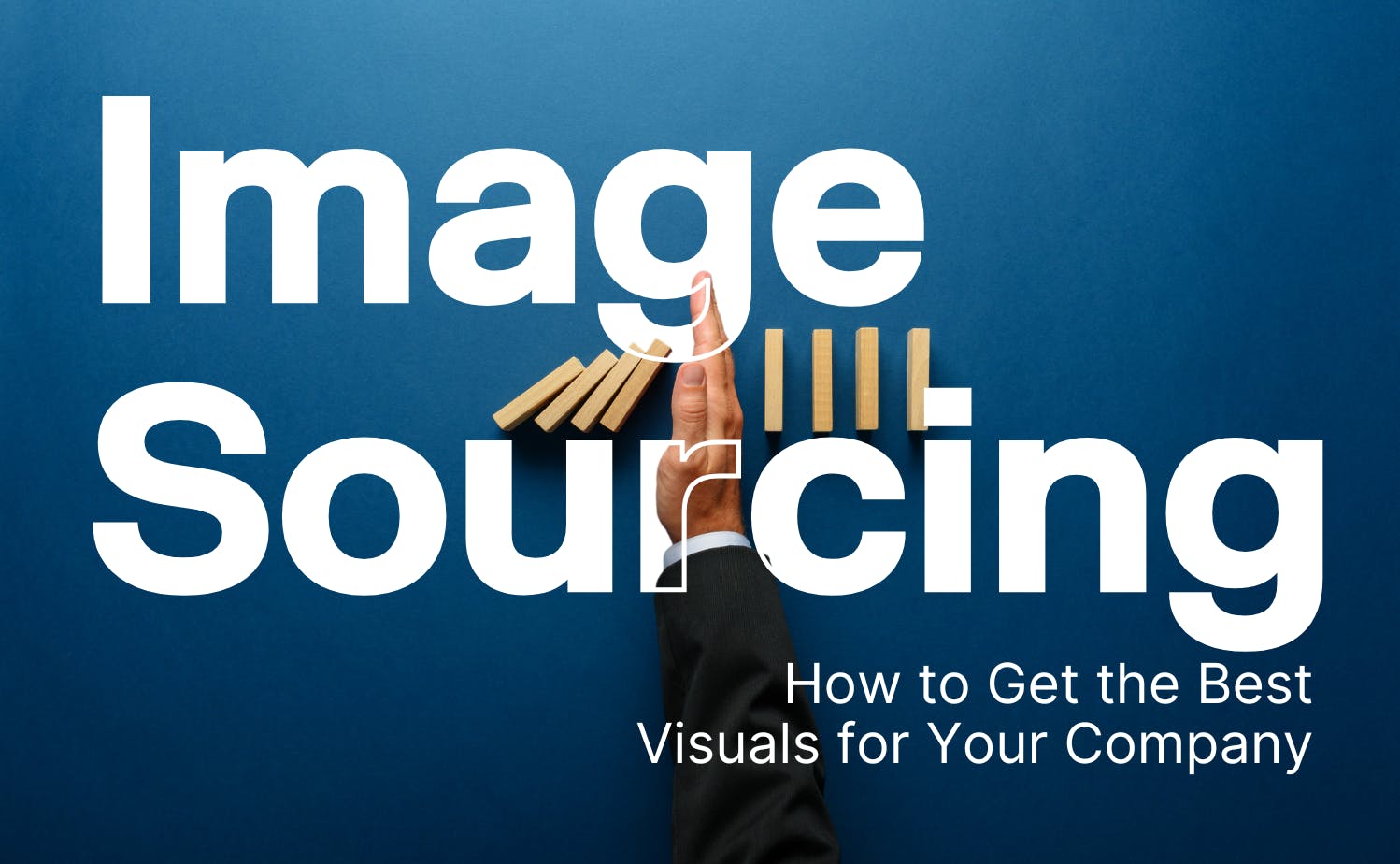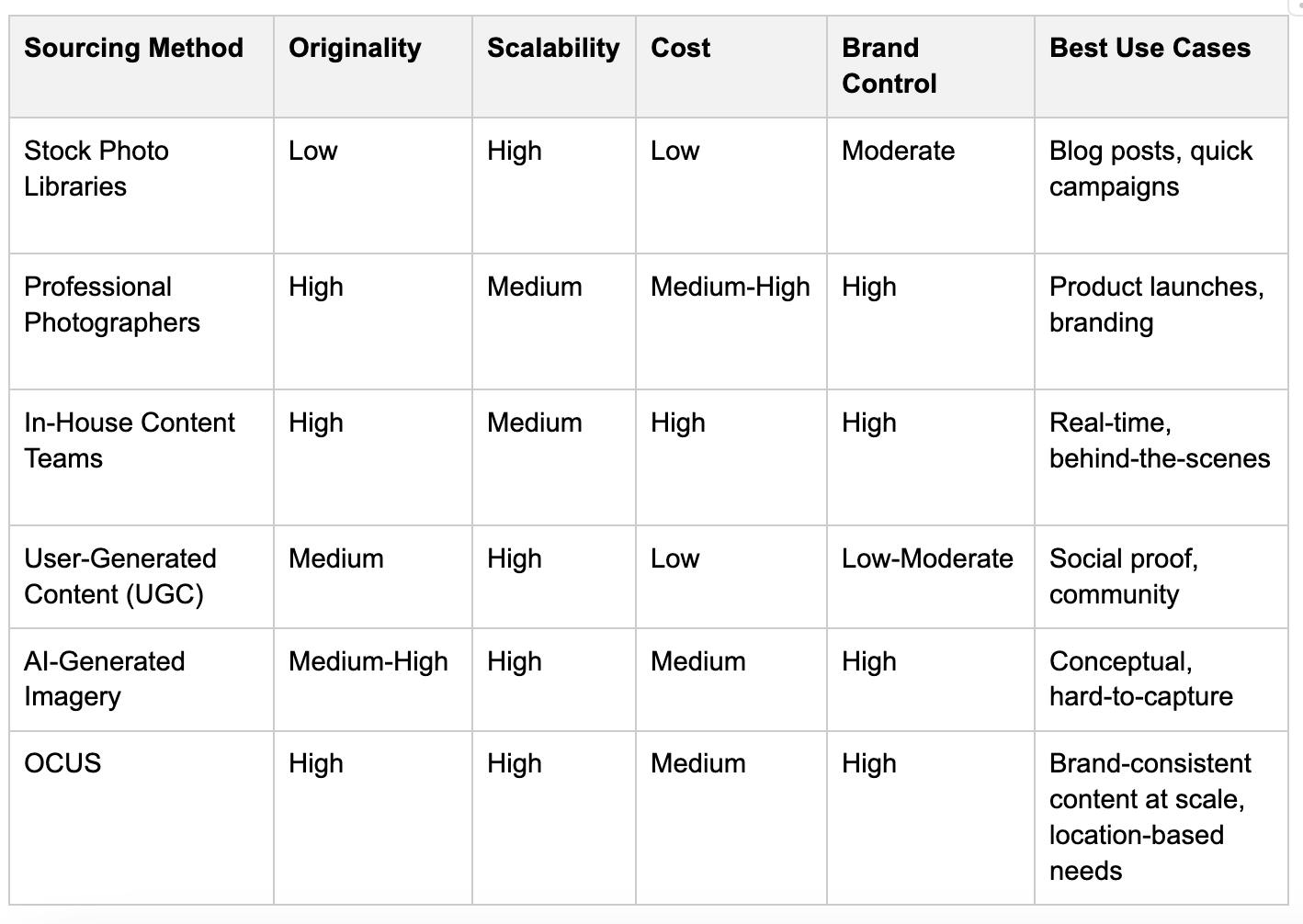
Image Sourcing: How to Get the Best Visuals for Your Company

In enterprise marketing, where every campaign and every post is a chance to connect with your audience, visuals are often the difference between scrolling past or stopping in awe. Today’s marketing professionals know that images aren’t just fillers—they’re the focal point. The right visuals can tell a story, evoke emotion, and ultimately drive engagement.
Why Visuals Matter for Enterprise Branding
In enterprise marketing, visuals are more than decoration—they are the engine behind engagement, retention, and conversion. Research shows that pairing text with relevant images increases information retention by 65%, and content with images receives 94% more views than text-only content. Nearly 40% of marketers now rank visual content as the most important element in their strategy.
A compelling image can stop a potential customer mid-scroll, tell your brand’s story in a single glance, and drive measurable business results. For enterprises, the challenge is not just finding images, but sourcing visuals that are impactful, on-brand, and optimized for every channel[1].
Defining Your Visual Content Needs
Before sourcing images, clarify your requirements to ensure every visual asset works for your brand.
Key Considerations
- Brand Identity: Does your brand have a defined visual style—minimalist, bold, playful? Every image should reinforce this identity.
- Platform-Specific Content: LinkedIn may require polished, professional visuals, while Instagram rewards creativity and boldness.
- Audience Preferences: Are you targeting B2B decision-makers or a younger, trend-driven audience? Tailor visuals accordingly.
Example: A global B2B SaaS company may need executive portraits for LinkedIn, product shots for the website, and user-generated content for social campaigns.
Comparing Image Sourcing Methods
Enterprises have several options for sourcing images, each with distinct strengths and limitations. The right approach depends on your brand’s goals, resources, and need for originality.

Stock Photo Libraries
- Pros: Cost-effective, instant access, wide variety.
- Cons: Overused visuals, risk of generic or staged feel.
Professional Photographers
- Pros: Unique, brand-aligned, high-quality.
- Cons: Logistical complexity, higher cost, especially across multiple markets.
In-House Content Creation
- Pros: Flexibility, real-time production, full control.
- Cons: Requires investment in talent and equipment.
User-Generated Content
- Pros: Authentic, trust-building, community-driven.
- Cons: Quality and consistency vary, requires moderation.
AI-Generated Imagery
- Pros: Customizable, scalable, fills creative gaps.
- Cons: Ethical and copyright considerations, may lack human touch.
OCUS
- Pros: High-quality, brand-consistent visuals; scalable across geographies; streamlined logistics with a global creator network.
- Cons: Less spontaneous than UGC; still requires coordination and planning.
Best Practices for Image Sourcing Success
1. Legal Compliance and Image Rights
- Always secure the proper rights for every image.
- Understand licensing terms, especially for Creative Commons or free images.
- Use reverse image search tools (Google Images, TinEye) to verify sources and licensing.
2. Accurate Image Citation
- Include creator, title, source, and license type.
- Use standard formats (APA, MLA, Chicago) for citations.
3. Prioritize Diversity and Inclusion
- Select visuals that reflect a broad range of audiences and experiences.
- Inclusive imagery strengthens brand reputation and broadens appeal.
4. Optimize for Digital Performance
- Compress images to balance quality and load speed.
- Adapt resolution and format for each platform (desktop, mobile, social).
5. Monitor Trends and Performance
- Stay current with design trends (e.g., 3D illustrations, bold typography).
- Use analytics to track which visuals drive engagement and conversions.
Tip: Use analytics tools to measure image performance and adjust your sourcing strategy based on real data.
How OCUS Elevates Enterprise Image Management
- On-Demand Photography at Scale: Access a global network of 35,000+ professional photographers across 43+ countries, ensuring consistent quality and brand alignment for every shoot[2].
- AI-Powered Image Enhancement: Automatically optimize and enhance images to meet evolving brand standards and digital requirements[3].
- Effortless Content Moderation: Protect your brand with real-time, AI-driven moderation that upholds compliance and quality across all user-generated and sourced content[4].
- Performance Analytics: Instantly measure the impact of your visuals, enabling data-driven decisions that drive conversions and revenue[5].
Example: An international retailer can coordinate product photoshoots in multiple markets, moderate UGC for compliance, and optimize every image for web and mobile—all from a single platform.
Conclusion and Next Steps
Effective image sourcing is a strategic advantage for enterprise brands. The right visuals drive engagement, build trust, and support business growth. By clarifying your needs, comparing sourcing options, and following best practices, you can build a visual library that truly represents your brand.
OCUS simplifies this process with a unified platform that combines global photography, AI-driven enhancement, and real-time moderation. Discover how OCUS can help your brand achieve visual excellence at scale.
Ready to elevate your brand’s visual content? Visit OCUS to learn more.